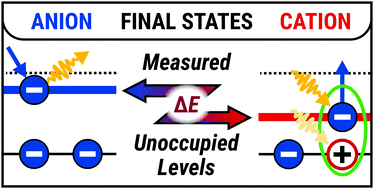The role of initial and final states in molecular spectroscopies
Abstract
Interpreting experimental spectra of thin films of organic semiconductors is challenging, and understanding the relationship between experimental data obtained by different spectroscopic techniques requires a careful consideration of the initial and final states for each process. The discussion of spectroscopic data is frequently mired in confusion that originates in overlapping terminology with however distinct meaning in different spectroscopies. Here, we present a coherent framework that is capable of treating on equal footing most spectroscopies commonly used to investigate thin films of organic semiconductors. We develop a simple model for the expected energy level positions, as obtained by common spectroscopic techniques, and relate them to the energies of molecular states. Molecular charging energies in photoionization processes, as well as adsorption energies and the screening of molecular charges due to environmental polarization, are taken into account as the main causes for shifts of the measured spectroscopic features. We explain the relationship between these quantities, as well as with the transport gap, the optical gap and the exciton binding energy. Our considerations serve as a model for weakly interacting systems, e.g., various organic molecular crystals, where wave function hybridizations between adjacent molecules are negligible.



 Please wait while we load your content...
Please wait while we load your content...